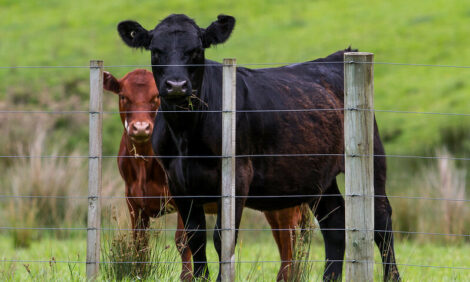



Corn Stalks For Beef Cattle Grazing
US - With fall corn harvest and calf weaning arriving, what sources will you utilise to background calves and feed cows through fall and into winter? Grant Crawford, a livestock educator with University of Minnesota Extension, considers cornstalk residue.
This fall’s Minnesota corn crop is estimated at somewhere around 1.2 billion bushels harvested from 7.7 million acres. The residue that remains after corn harvest can be effectively utilised as cattle feed, with an average total dietary nutrient concentration of 50-55 per cent and a crude protein concentration of 4-6 per cent. Although these values are low, it important to recognise that after weaning, the nutrient requirements for cows are also very low, and can nearly be met with cornstalk grazing alone.
The most palatable parts of cornstalk residue are the husk and the leaf, so naturally these portions will be consumed first with the remaining stem and cob being less desirable to cattle. Therefore, one important consideration is the amount of husk and leaf that are available. The University of Nebraska devised a formula to determine this amount based on corn yield. The formula is: Pounds of leaf and husk per acre = ([bushels per acre corn grain yield X 38.2] + 429) x 0.39.
This year’s Minnesota corn crop is estimated to average 167 bushels/acre. Using the formula, this would result in 2,650 pounds of leaf and husk per acre. About 50 per cent of this will be lost due to trampling and other factors, so about 1,325 pounds will be available for grazing. This amount of residue is enough to feed a 550-pound steer for about 85 days, and is enough to feed a 1,400 pound cow for about 45 days.
Because the protein content of cornstalk residue is low, supplementation may be necessary. A good rule of thumb for calves grazing cornstalk residue is to supplement approximately 0.5 to 0.9 pounds of protein per day. This can be accomplished with alfalfa hay at 3-5 pounds per head daily, dried distillers grains at 2-3.5 pounds per head daily, or soyhulls at 4-7 pounds per head daily. For cows, daily supplementation of about four pounds of alfalfa hay, three pounds of dried distillers grains, or six pounds of soyhulls is enough to meet nutrient requirements when grazing cornstalks.
Cornstalk residue grazing can be a low-cost, low-input method of grazing for both calves and cows. Specific attention should be paid to stocking rates and supplementation levels to ensure that this practice is completed in the most cost-effective way possible.


